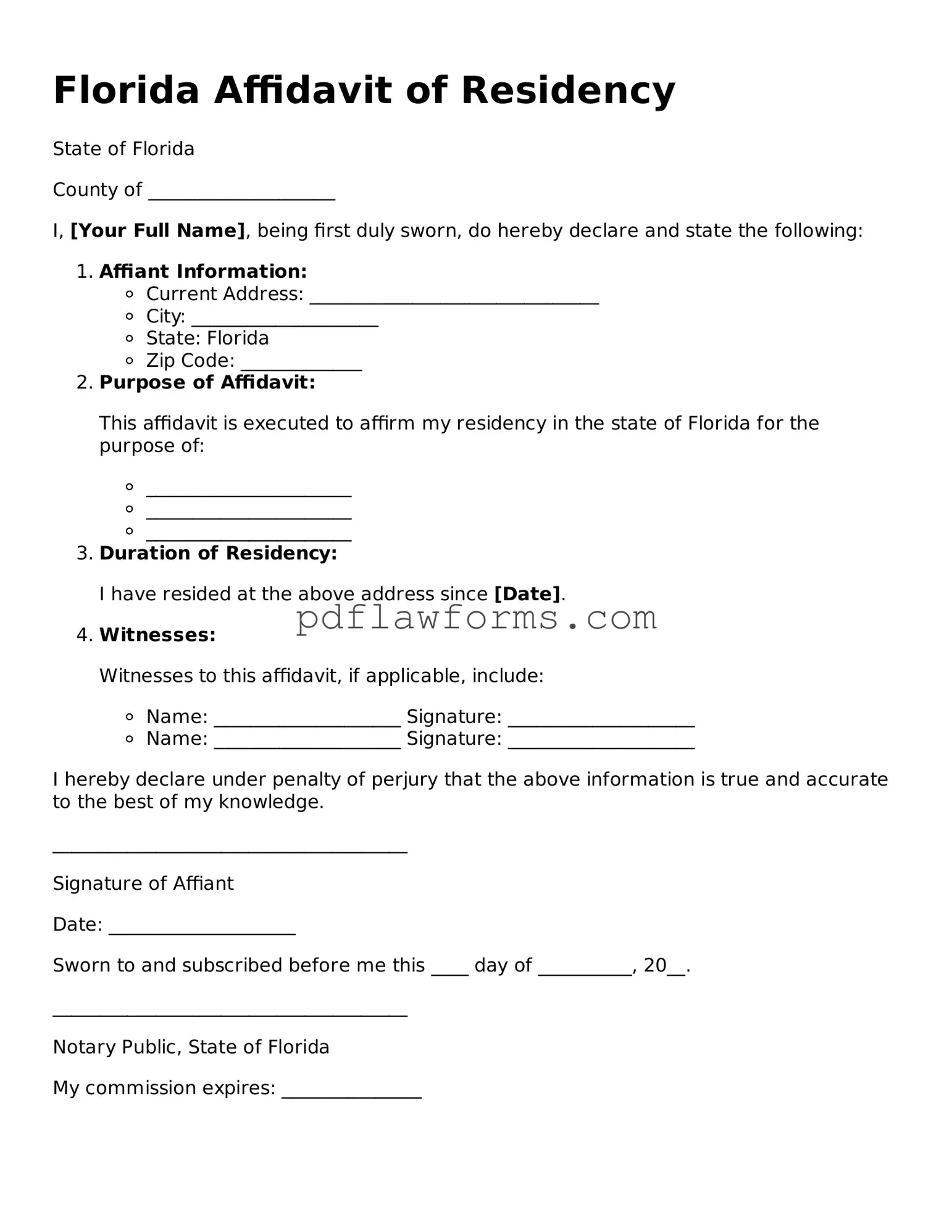Filling out the Florida Affidavit of Residency form can be straightforward, but many individuals make common mistakes that can lead to delays or complications. One frequent error is not providing accurate personal information. Ensure that your name, address, and other identifying details are correct. Even a small typo can cause significant issues.
Another mistake is failing to include the date. The affidavit must be dated to confirm when the information was provided. Without a date, the form may be considered incomplete, leading to potential rejections or requests for additional documentation.
Many people overlook the requirement for a witness signature. In Florida, affidavits often need to be signed in the presence of a witness. Neglecting to have a witness can invalidate the affidavit, meaning that the document may not be accepted for its intended purpose.
Not understanding the purpose of the affidavit can also lead to errors. The affidavit serves to confirm residency, so it's crucial to ensure that the information provided aligns with the intended use of the document. Misrepresenting your residency status can lead to legal complications.
Some individuals forget to sign the affidavit themselves. A signature is a critical component of the document. Without it, the affidavit cannot be considered valid, rendering all the information provided useless.
Finally, failing to keep a copy of the completed affidavit is a mistake many make. Always retain a copy for your records. This can be beneficial for future reference or if any questions arise regarding the affidavit’s validity.
